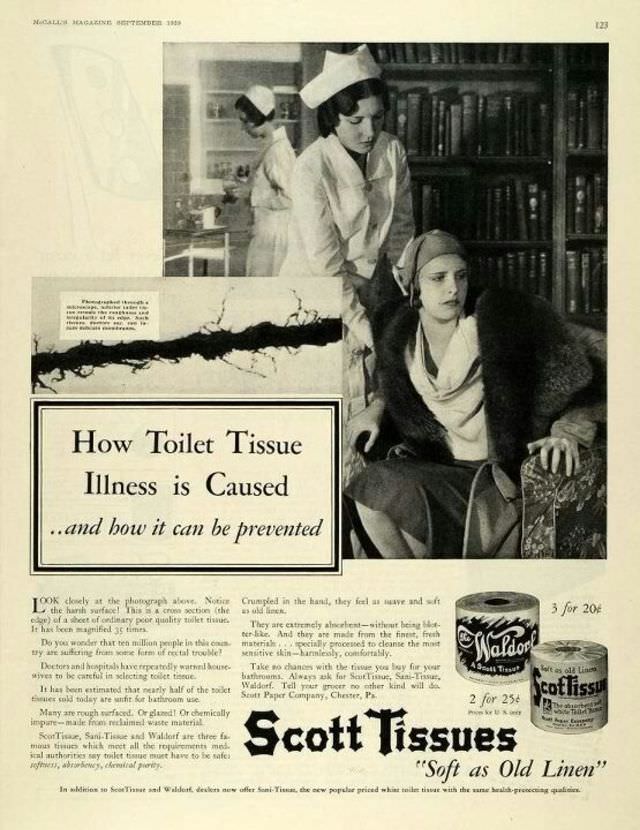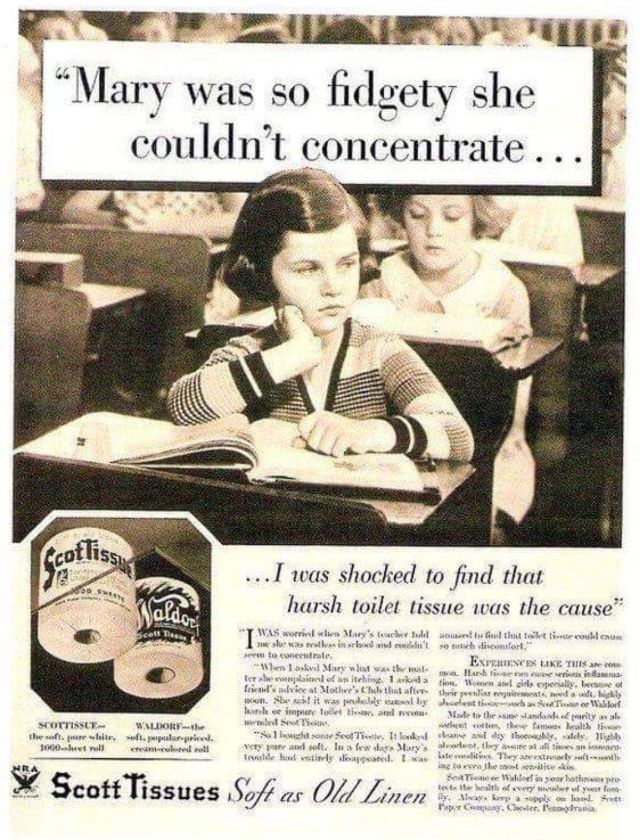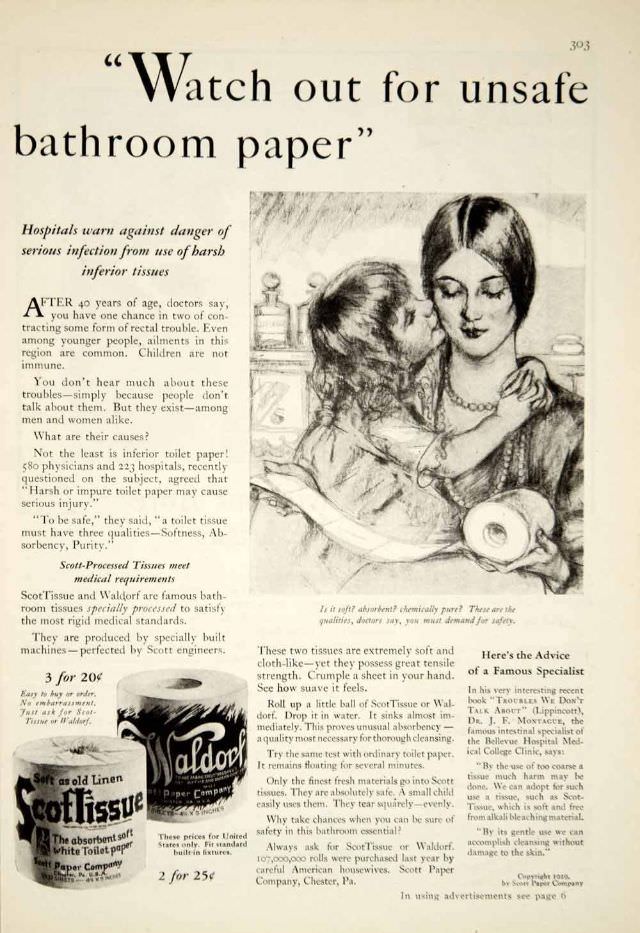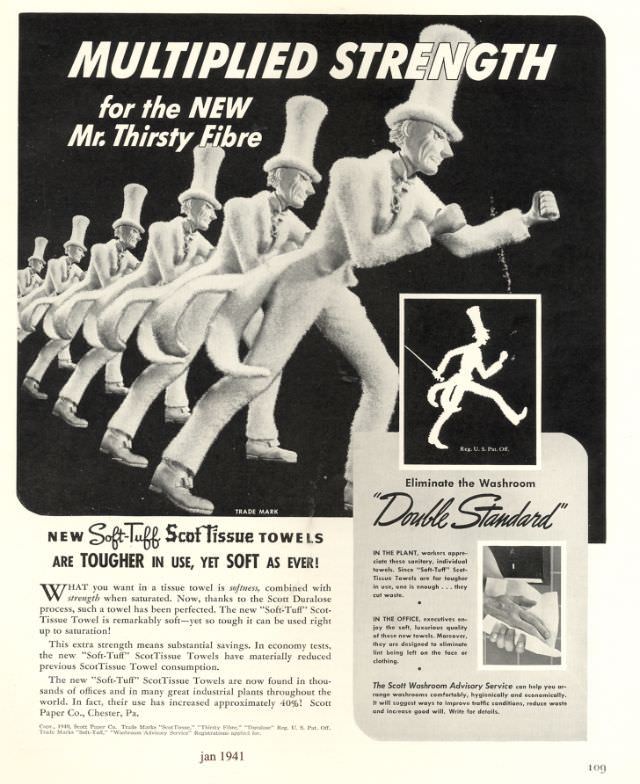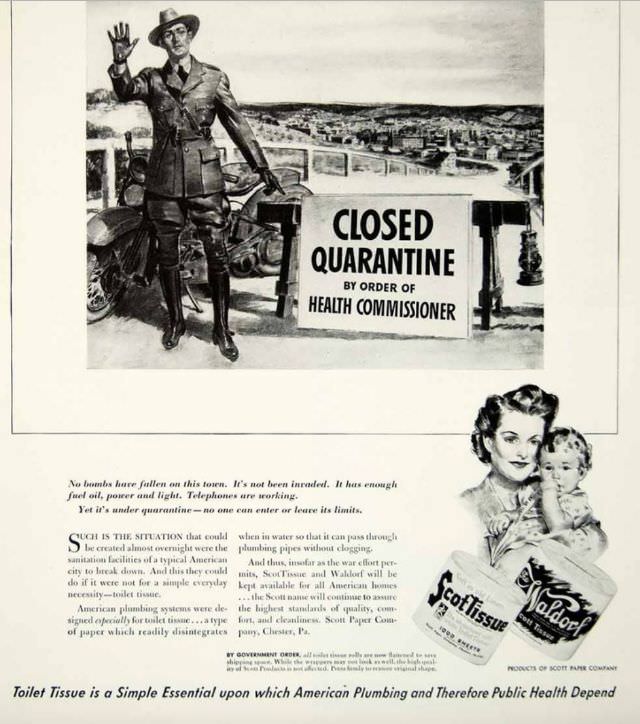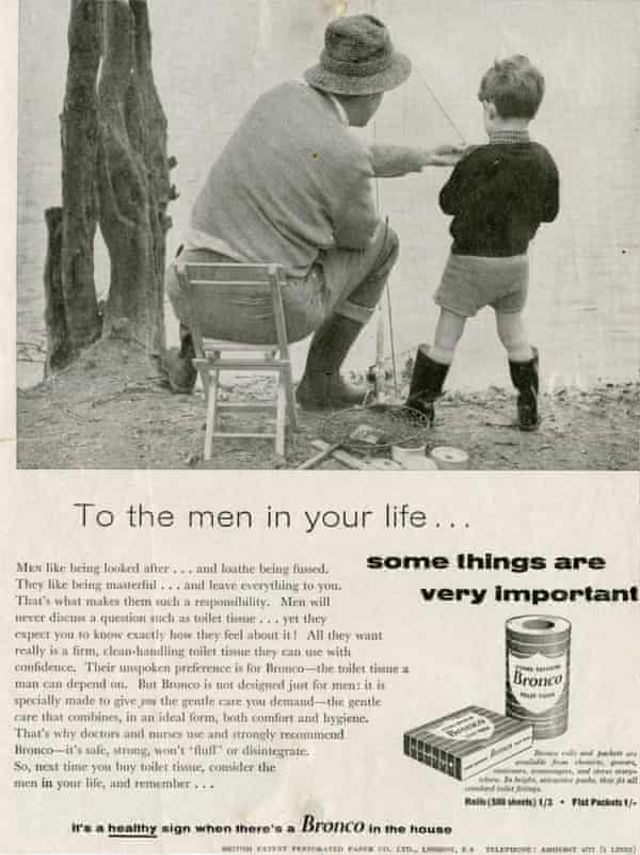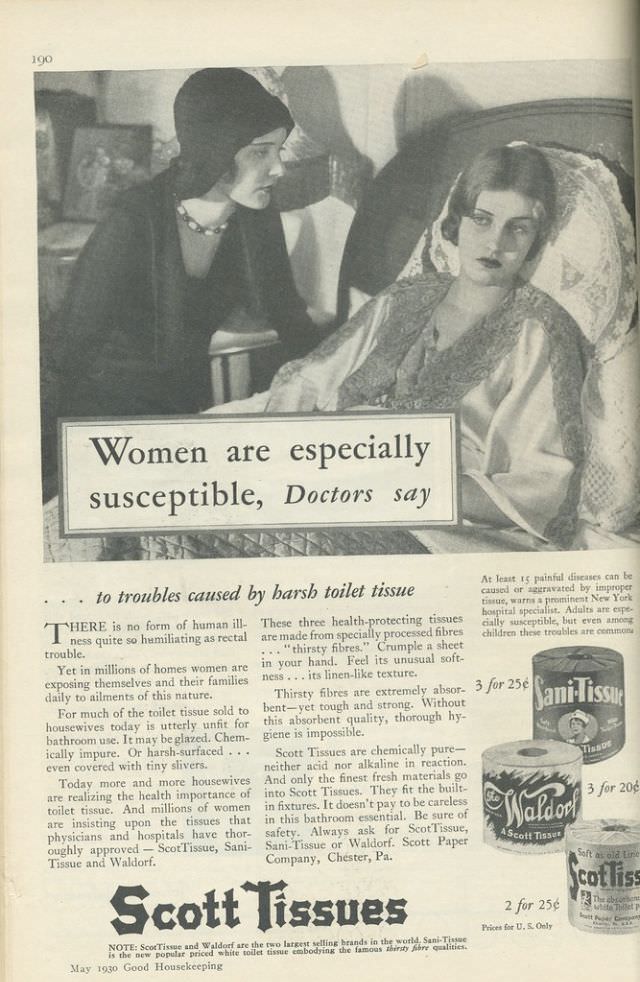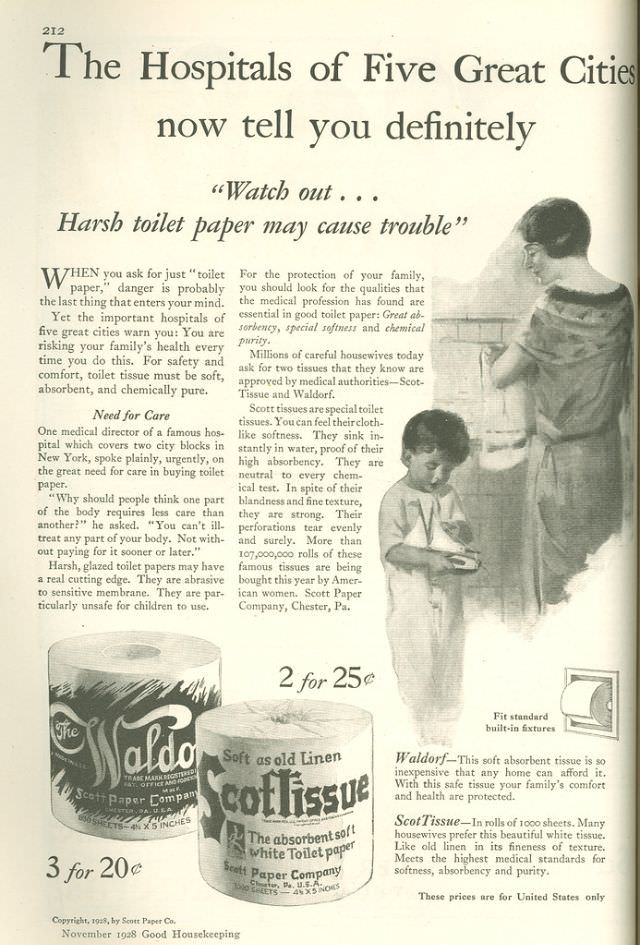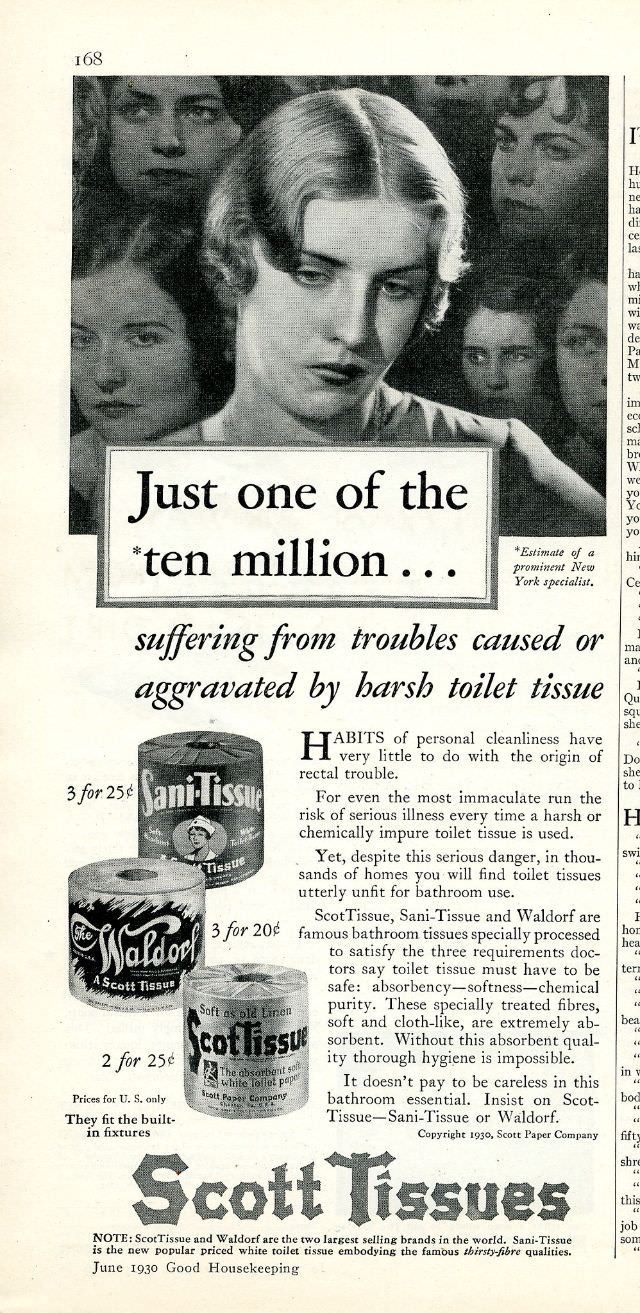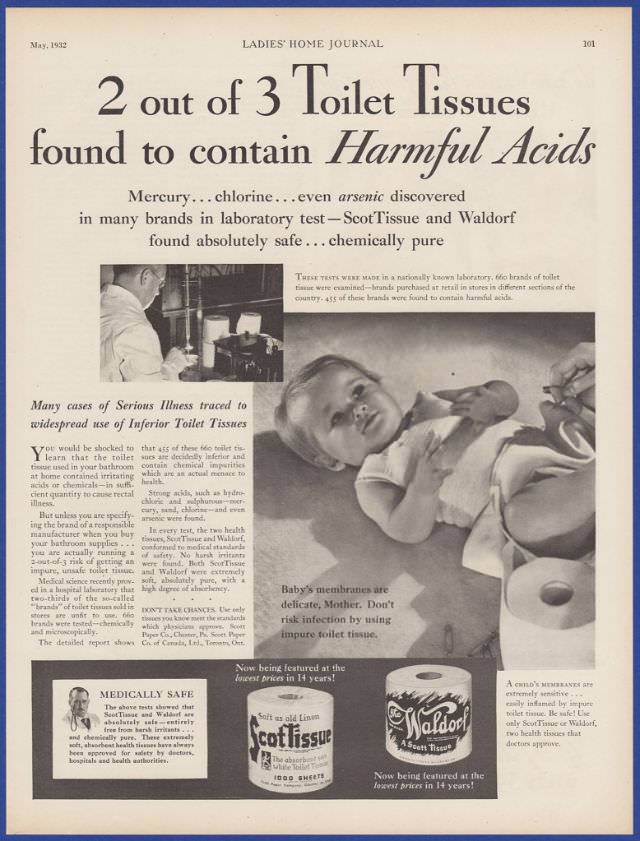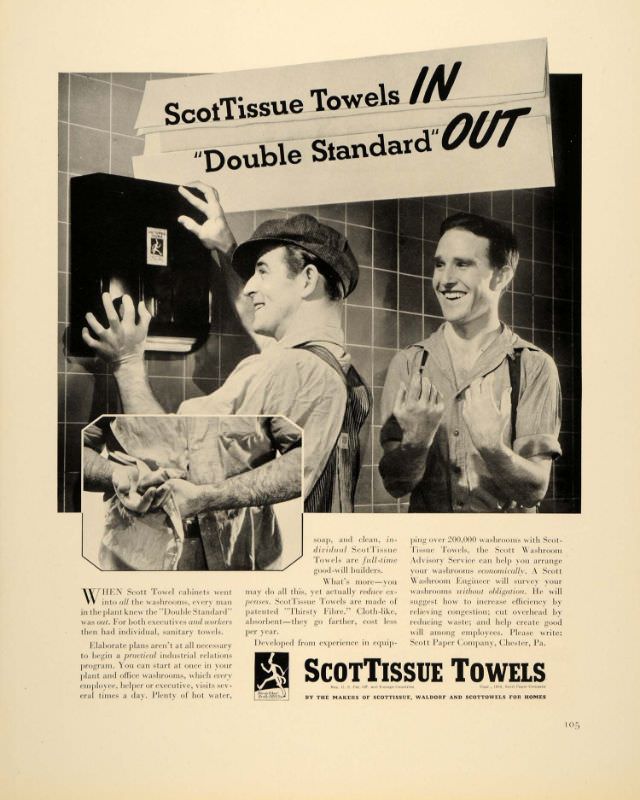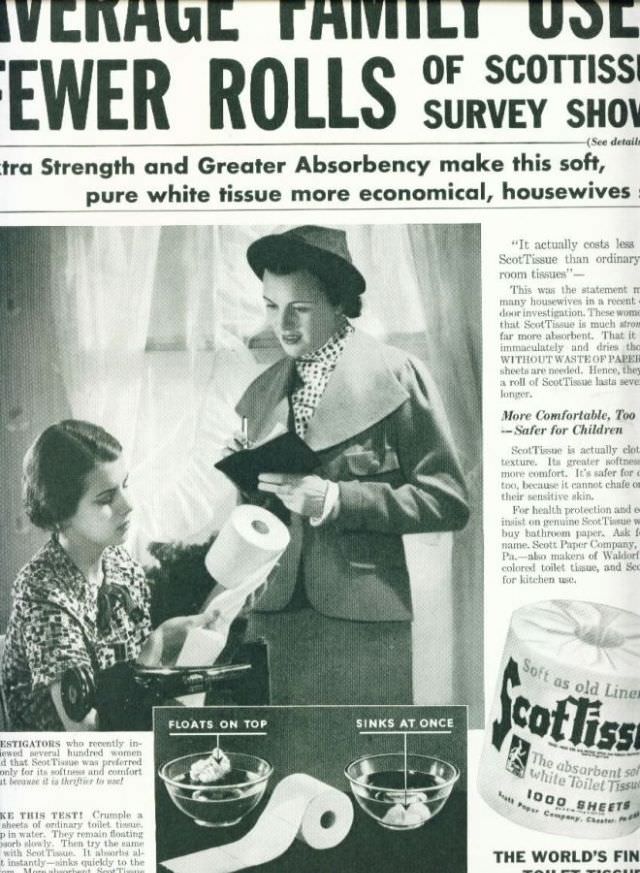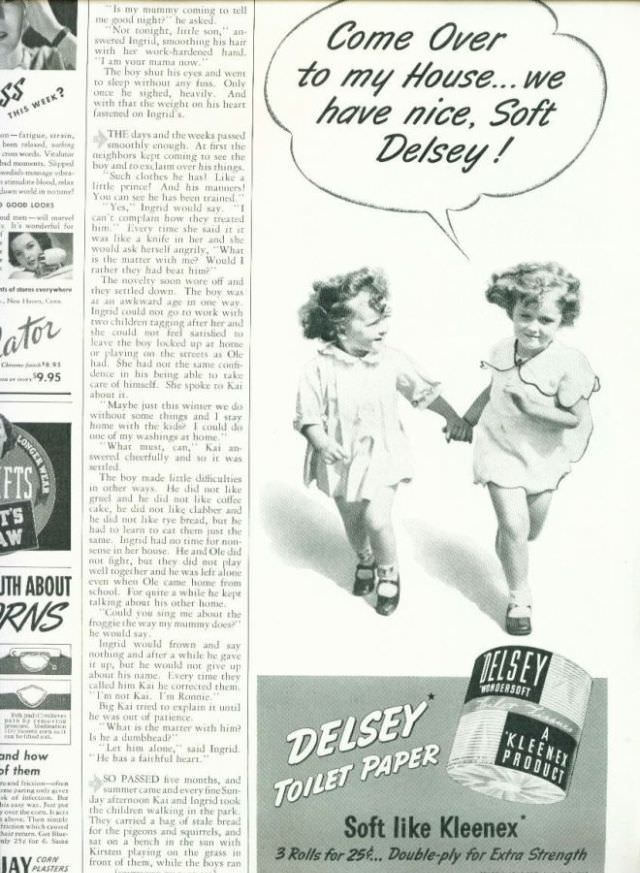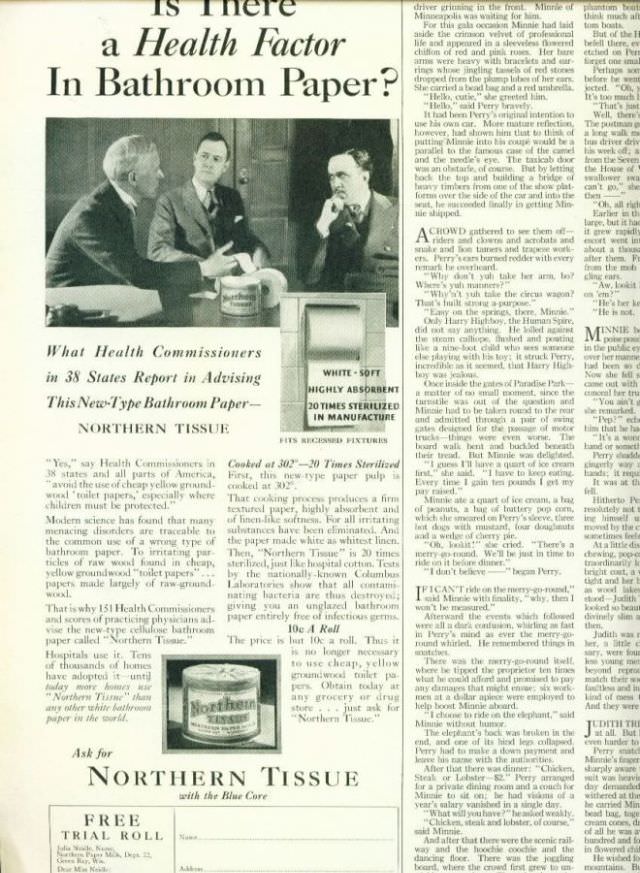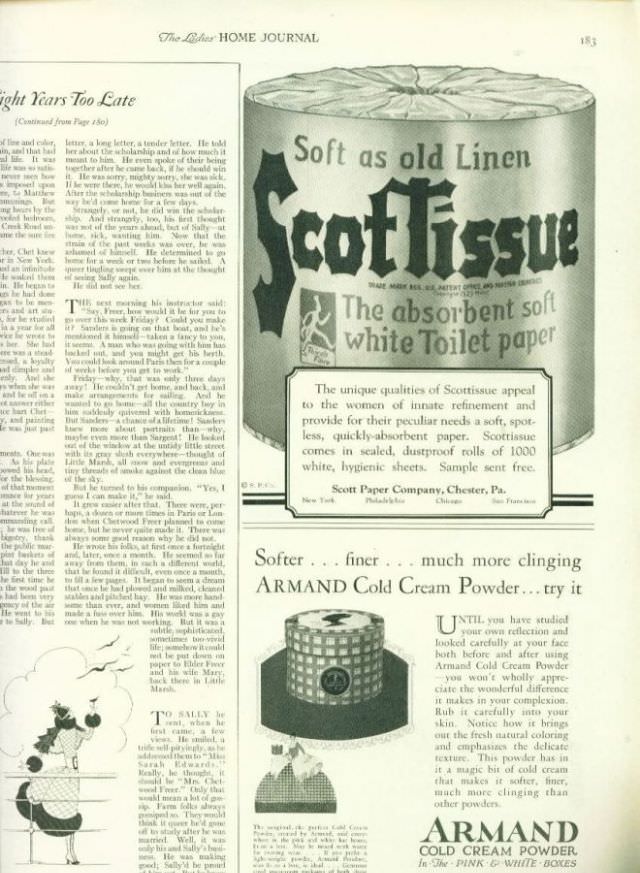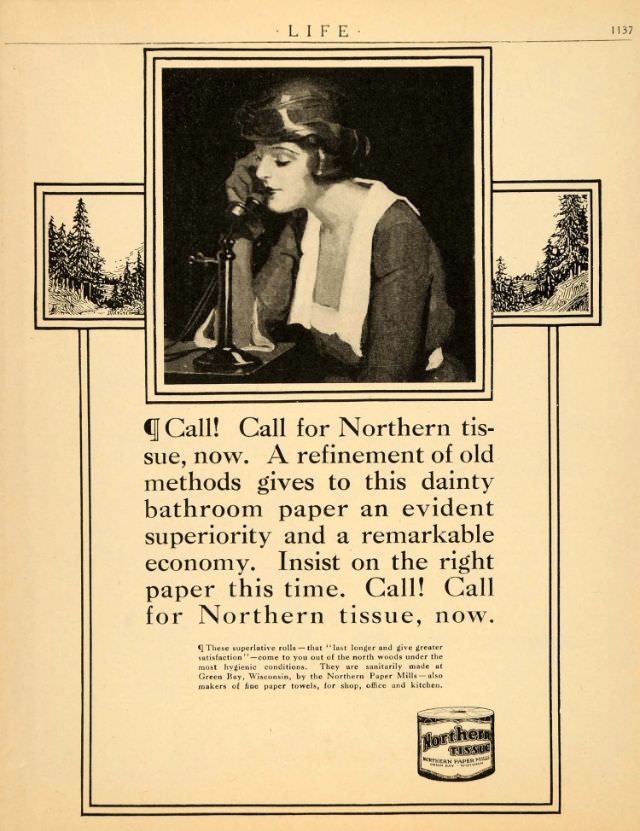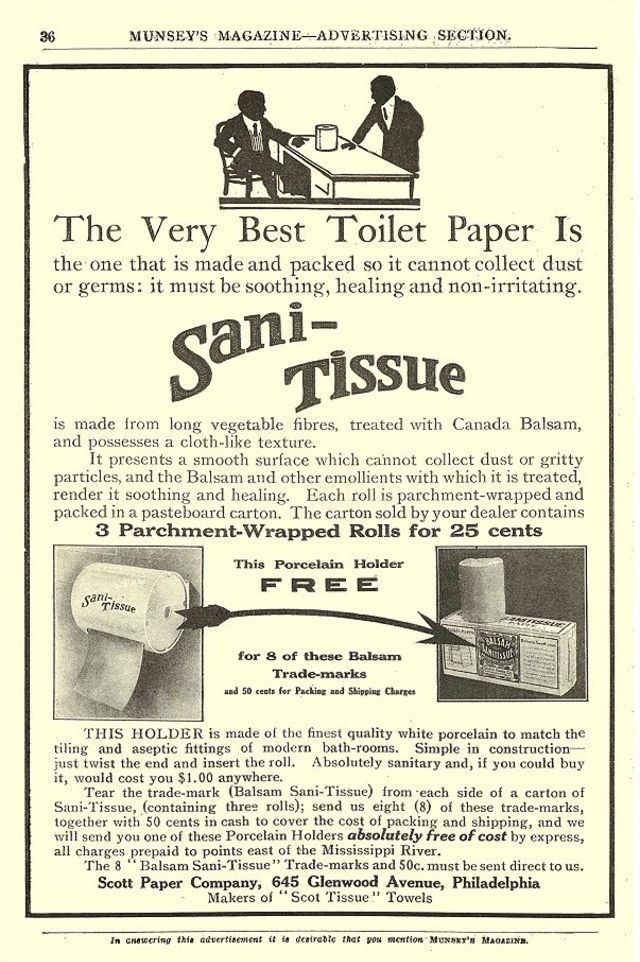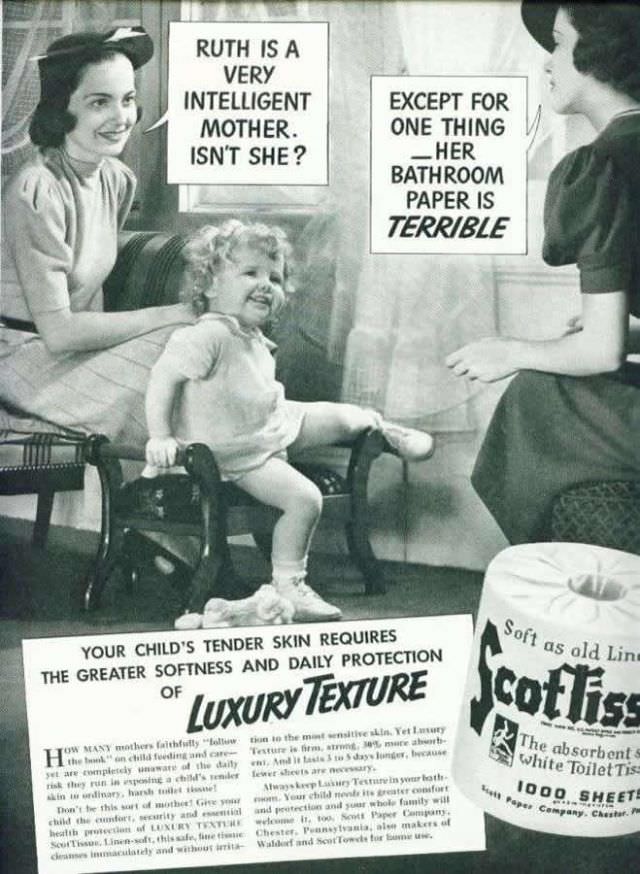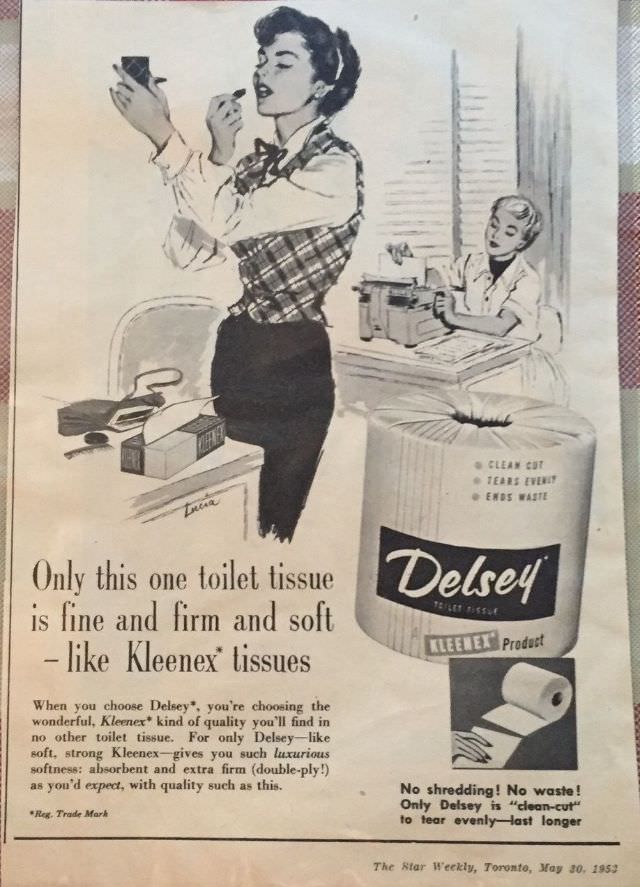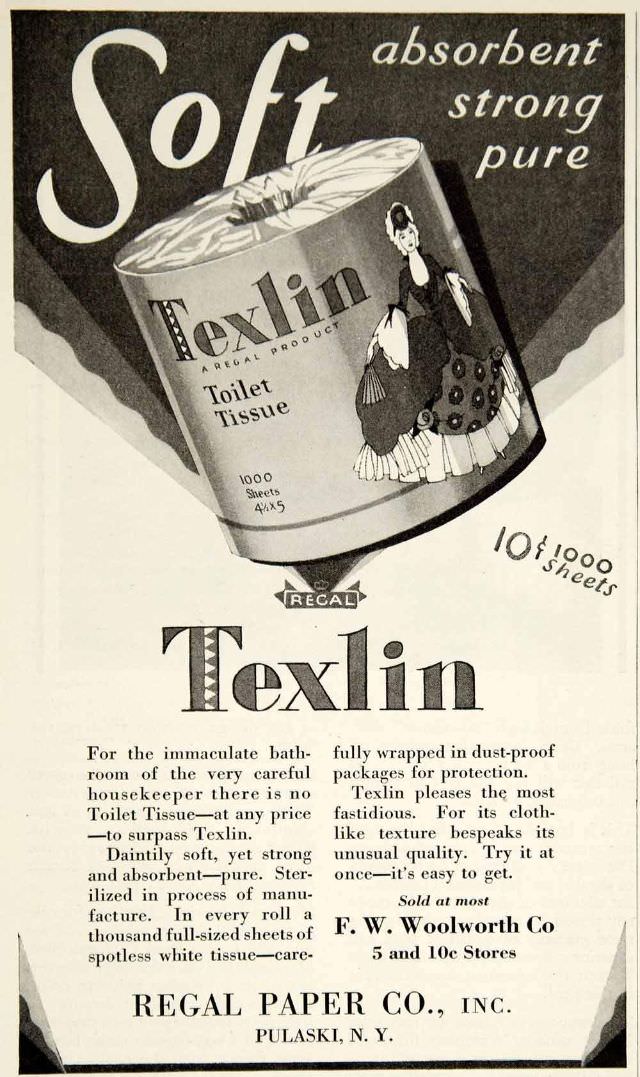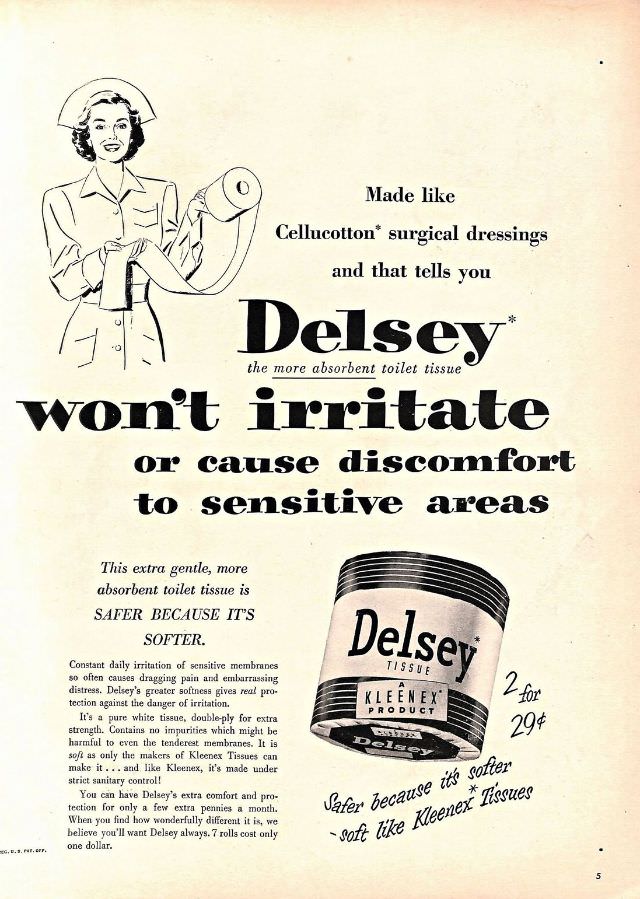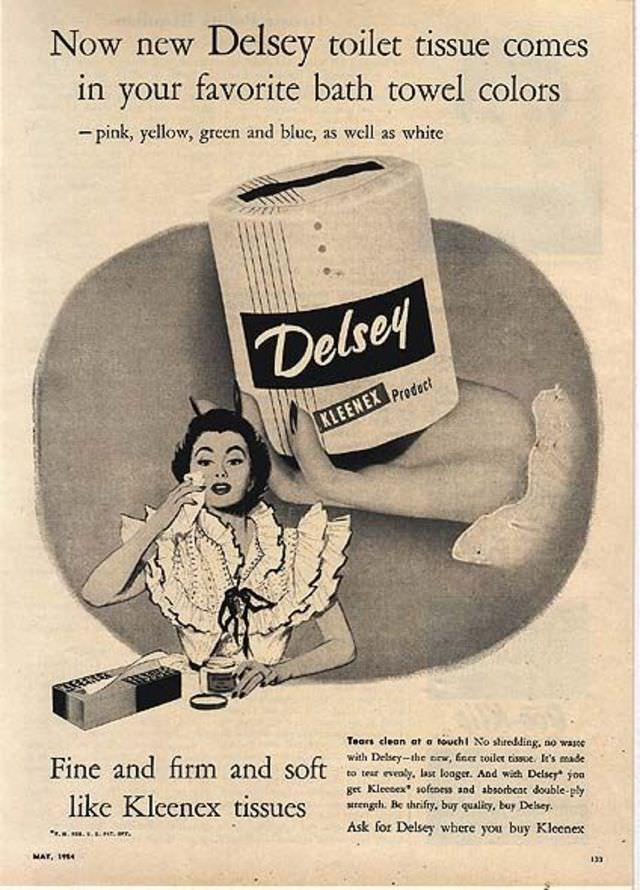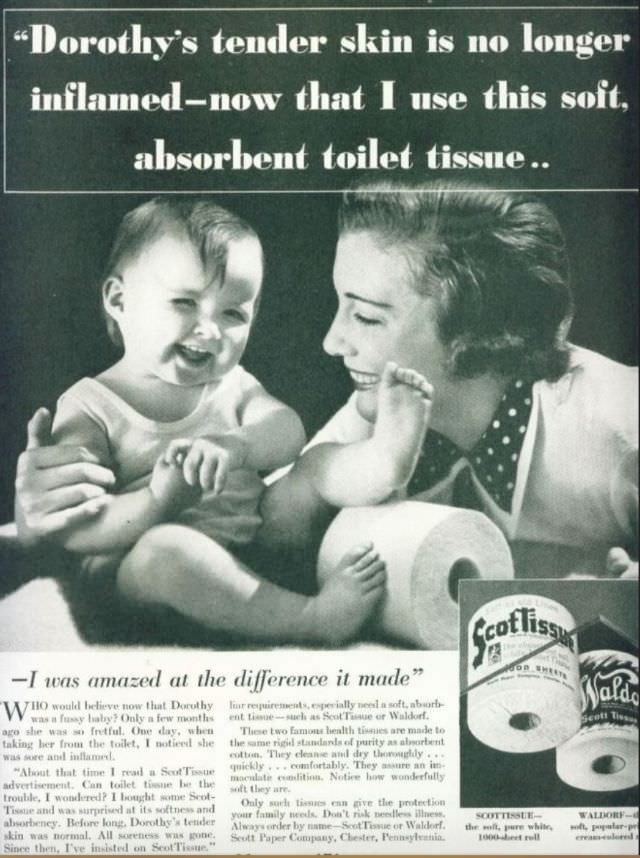Toilet paper became easily available in the mid-19th century when Joseph Gayetty of New York marketed a “Medicated Paper, for the Water-Closet,”. However, the marketing of the product is a bit tricky from the beginning. It is difficult for marketers and advertising companies to describe the features and qualities of their products and how it is different from others. The early marketing strategies targeted hygiene and medical reasons to promote toilet papers.
Gayetty advertised his product as ‘medical paper’, while other brands advertised it as a ‘paper for hemorrhoids’. Presenting the product in medical terms was the only way to sell bathroom tissue. Northern Tissue’s marketed their product as a sustainable and durable product in the 1920s. They published their ads in Life Magazines. After the 1940s brands improved their marketing strategies. Prized textures, convenience, satisfaction, and conscientiousness became the key messages.
In 1945, Scott focused on the role of the roll in germs at bay – foretelling the future for facial tissue. Scott actually illustrated the use of a mask made of tissue paper in order to avoid physical and “aerial” contact with the menace of the common cold. Mostly women and children were featured in the advertisements.
Take a look at these vintage ads that show how companies and bands sold their toilet papers in the past.


